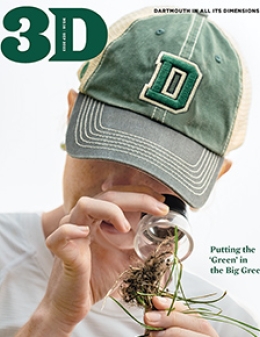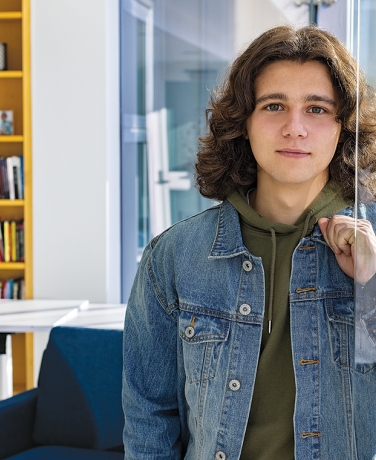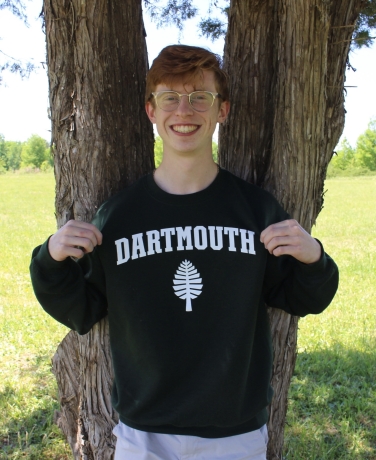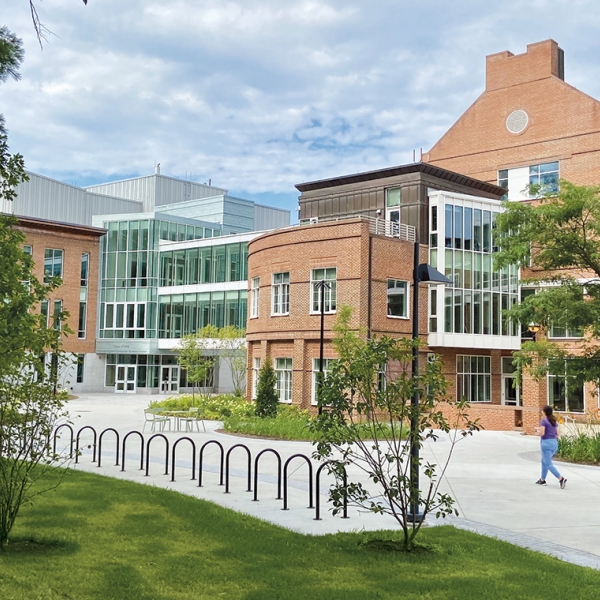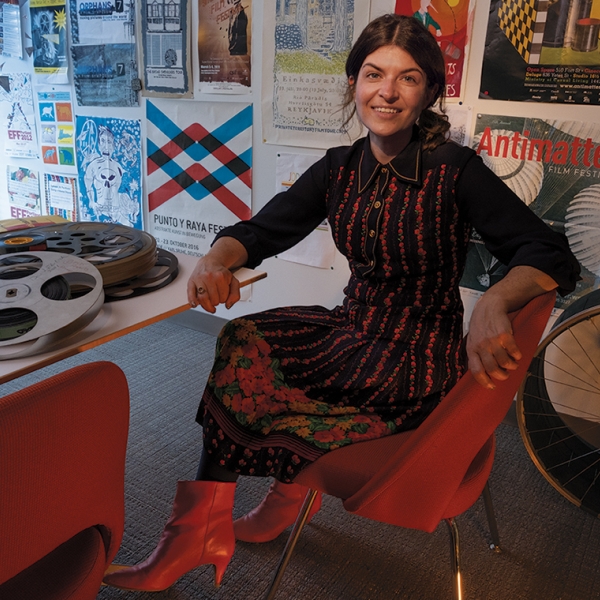"The Hood is a gem on campus," says Emil Liden '25 in reference to Dartmouth's Hood Museum of Art, whose 65,000 works represent the diverse artistic traditions of six continents. Emil was a social media assistant and gallery attendant at the museum before serving as a curatorial intern this summer. "It's a really important cultural spot in the Upper Valley of New Hampshire and Vermont. What makes the Hood different is that it's also a teaching museum with a unique student focus."
In fact, Dartmouth faculty often bring their classes to engage with original works of art at the Hood's Bernstein Center for Object Study. By the end of his second year, Emil had visited the Hood as part of four different Dartmouth classes. Associate Professor of Architectural History Nicola Camerlenghi, who teaches Italian Renaissance Architecture, brought Emil and his classmates to study early sketches of Roman buildings from the Hood's collection. "We also worked with an exhibition designer at the Hood to understand how we might create an exhibition with those pieces," Emil explains. "If I were visiting the Hood on my own, I might see a painting, take it in, read the plaque on the wall, and then move on. But having a curator teach us about the art gave it a deeper meaning."
The museum has also prompted Emil to consider new ways to study art. "I think people sometimes see STEM and the humanities as two separate things," he says. "But for me, studying art is like a math problem." That mindset led Emil to take classes in both art history and computer science—and find natural intersections between the two. He's explored outside the classroom, too, helping design the layout of the Christian thought journal Dartmouth Apologia, taking photographs for the student newspaper, and leading tours for prospective students.
Emil now works as a research assistant with Professor Camerlenghi helping to develop Augmendo, a mobile application that uses augmented reality technology to teach users about pieces of campus art when scanned with a cell phone camera. Emil helped lead the expansion of the app's content to include the Dartmouth Cemetery and collaborated with an international software development team. "This app changes the way we interact with art," Emil says. "I'm envisioning the day when all of campus is using Augmendo."
Emil often returns to a memorable piece of advice offered to him by visiting professor Shevaun Aysa Mizrahi, a Turkish-American filmmaker. "She told me, 'Never apologize for your creativity.' That has always stuck with me. I think Dartmouth is a place that really cultivates minds that have the ability, and the courage, to think outside the box."
Photograph by Don Hamerman

